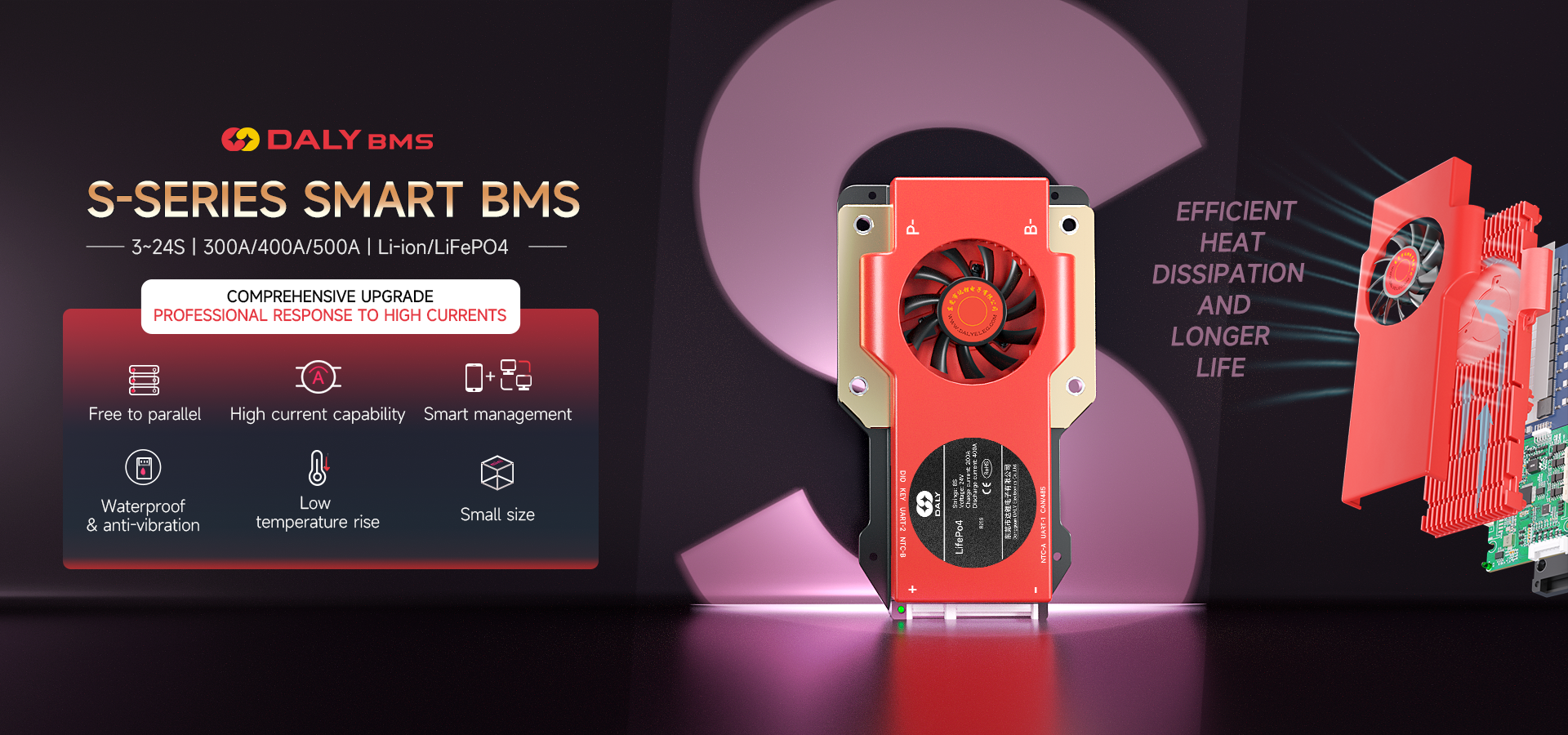
1. Wake-Up Methods
When first powered on, there are three wake-up methods (future products will not require activation):
- Button activation wake-up;
- Charging activation wake-up;
- Bluetooth button wake-up.
For subsequent power-on, there are six wake-up methods:
- Button activation wake-up;
- Charging activation wake-up (when the charger's input voltage is at least 2V higher than the battery voltage);
- 485 communication activation wake-up;
- CAN communication activation wake-up;
- Discharge activation wake-up (current ≥ 2A);
- Key activation wake-up.
2. BMS Sleep Mode
The BMS enters low-power mode (default time is 3600 seconds) when there is no communication, no charge/discharge current, and no wake-up signal. During sleep mode, the charging and discharging MOSFETs remain connected unless the battery undervoltage is detected, at which point the MOSFETs will disconnect. If the BMS detects communication signals or charge/discharge currents (≥2A, and for charging activation, the charger's input voltage must be at least 2V higher than the battery voltage, or there is a wake-up signal), it will immediately respond and enter the wake-up working state.
3. SOC Calibration Strategy
The actual total capacity of the battery and xxAH are set through the host computer. During charging, when the cell voltage reaches the maximum overvoltage value and there is charging current, the SOC will be calibrated to 100%. (During discharging, due to SOC calculation errors, SOC may not be 0% even when undervoltage alarm conditions are met. Note: The strategy of forcing SOC to zero after cell overdischarge (undervoltage) protection can be customized.)
4. Fault Handling Strategy
Faults are classified into two levels. The BMS handles different levels of faults differently:
- Level 1: Minor faults, the BMS only alarms.
- Level 2: Severe faults, the BMS alarms and cuts off the MOS switch.
For the following Level 2 faults, the MOS switch is not cut off: excessive voltage difference alarm, excessive temperature difference alarm, high SOC alarm, and low SOC alarm.
5. Balancing Control
Passive balancing is used. The BMS controls the discharge of higher voltage cells through resistors, dissipating the energy as heat. The balancing current is 30mA. Balancing is triggered when all of the following conditions are met:
- During charging;
- The balancing activation voltage is reached (settable via the host computer); Voltage difference between cells > 50mV (50mV is the default value, settable via the host computer).
- Default activation voltage for lithium iron phosphate: 3.2V;
- Default activation voltage for ternary lithium: 3.8V;
- Default activation voltage for lithium titanate: 2.4V;
6. SOC Estimation
The BMS estimates the SOC using the coulomb counting method, accumulating the charge or discharge to estimate the battery's SOC value.
SOC Estimation Error:
| Accuracy | SOC Range |
|---|---|
| ≤ 10% | 0% < SOC < 100% |
7. Voltage, Current, and Temperature Accuracy
| Function | Accuracy | Unit |
|---|---|---|
| Cell Voltage | ≤ 15% | mV |
| Total Voltage | ≤ 1% | V |
| Current | ≤ 3%FSR | A |
| Temperature | ≤ 2 | °C |
8. Power Consumption
- Self-consumption current of the hardware board when working: < 500µA;
- Self-consumption current of the software board when working: < 35mA (without external communication: < 25mA);
- Self-consumption current in sleep mode: < 800µA.
9. Soft Switch and Key Switch
- The default logic for the soft switch function is inverse logic; it can be customized to positive logic.
- The default function of the key switch is to activate the BMS; other logic functions can be customized.
Post time: Jul-12-2024





